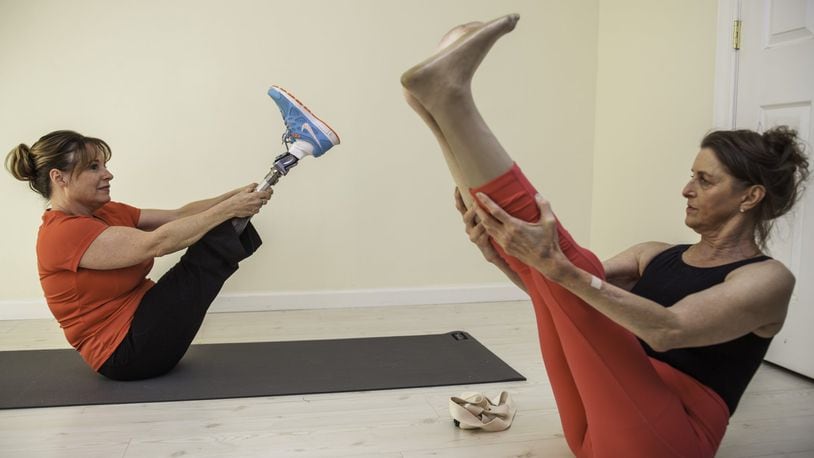>>Cancer survivor, amputee, teacher: Yoga ‘pulled me in and gave me hope’
“I kind of missed out on teenage drama, I was busy trying to stay alive,” Danzig said.
Now 56, Danzig won her battle with cancer, but she lost her leg, from just below the knee — a consequence of the disease.
“The amputation was rough, but chemo was much worse,” she said.
The former gymnast and dancer was not one to be relegated to the sidelines. Danzig started practicing yoga three decades ago and has been teaching it for 20 years.
“There were some scary moments when I first started practicing because there are a lot of challenging poses,” she said. “Now, it’s my go-to for stress relief or when I’m feeling achy. It also builds my confidence knowing that I can do certain things.”
The Oakwood resident is sharing her appreciation for the practice in her recently released book, “Yoga for Amputees, the Essential Guide to Finding Wholeness After a Limb Loss.” The comprehensive guide is designed for amputees as well as people who work with them, including yoga instructors and physical therapists.
“Most amputees want to normalize their lives after limb loss and this can help them do that,” she said.
Reaping the benefits
Better control and body awareness are just two of the many benefits that Danzig noticed in her own practice.
Walking with a prosthesis also has some challenges that yoga can address.
“Most amputees really want a better gait and to be able to use their prosthetic limb better,” she said. “Yoga helps stabilize the core and improve balance.”
And yoga offers more than a physical workout.
“The body gets physically stronger, but the mind also begins to relax,” Danzig said. “The breath-work is also helpful with pain and stress relief.”
Beyond the book
The book — several years in the making — is only part of Danzig’s plan to help other amputees through yoga. She is also planning local workshops and classes for 2019.
“One thing that’s awesome about teaching amputees is that you can tell them you’re going to ‘take your leg off’ and nobody is staring,” she said, smiling. “They all get it.”
Danzig’s dream is to work with amputees who have recently lost a limb.
“Those are the critical moments when coping strategies are essential,” she said.
To learn more about or purchase the book, visit www.yogaforamputeesbook.com. For information about upcoming classes for amputees, visit www.Marshatheresedanzig.com.
About the Author
